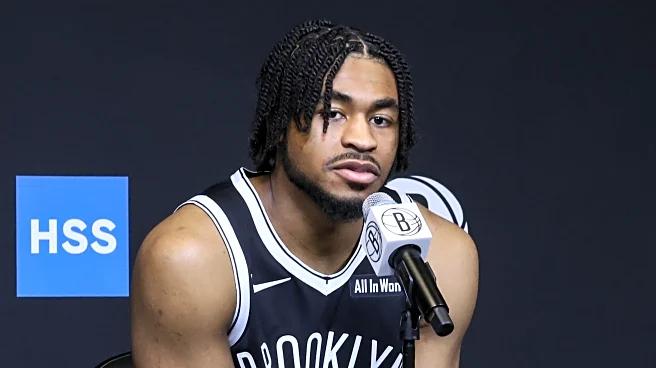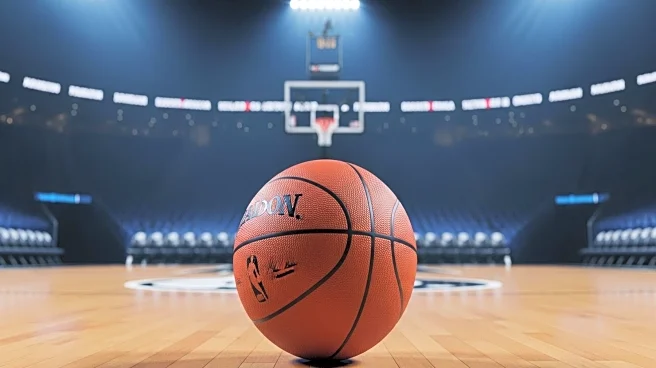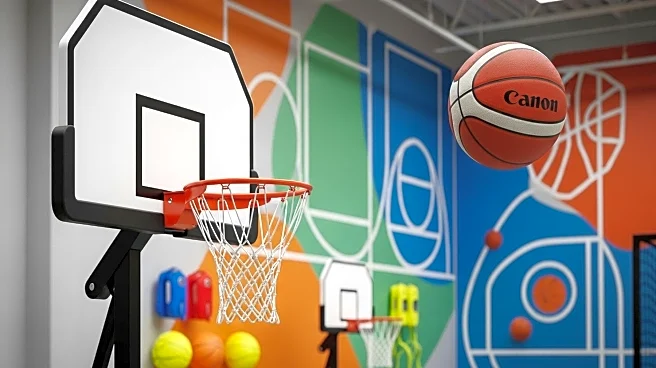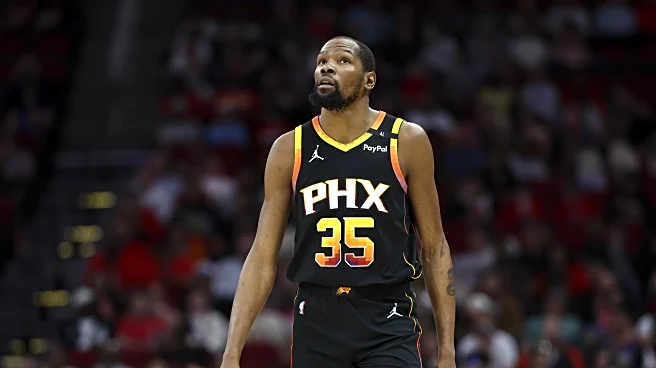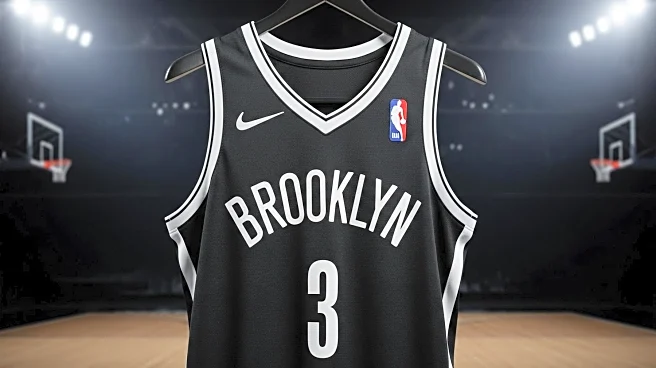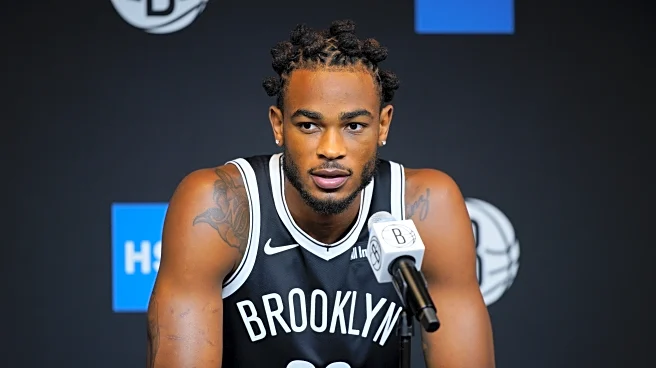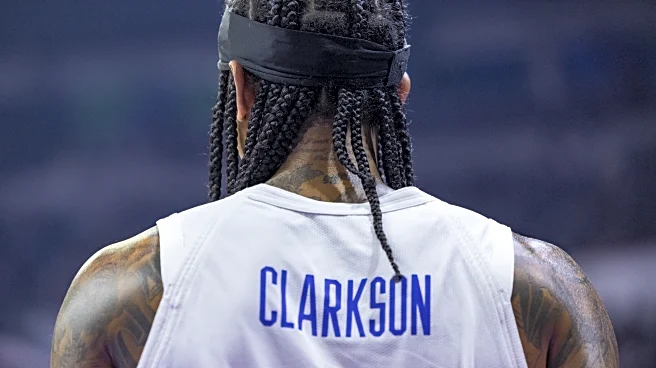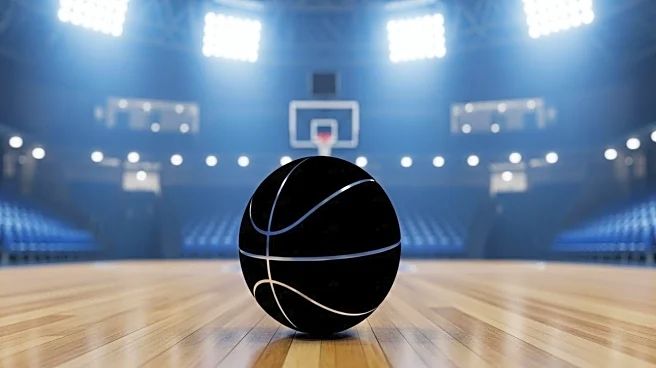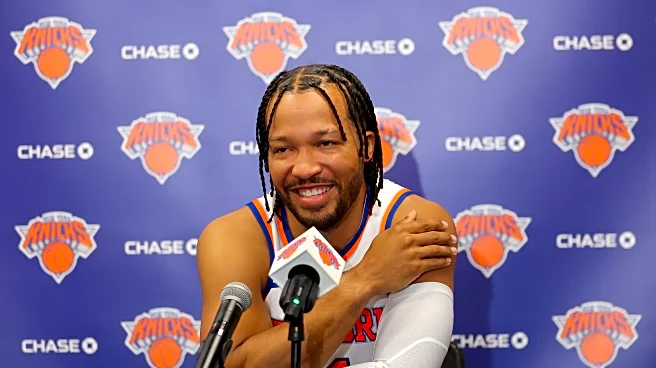Back in 2013, after the Brooklyn Nets traded for Paul Pierce, Kevin Garnett and Jason Terry, the court at Barclays was cordoned off and filled with journalists and TV crews from national and international
media as well as the local beat reporters. WFAN went live. The owner flew in from Moscow on his Gulfstream.
When six years later, the Nets introduced Kevin Durant and Kyrie Irving — what a thrill it was to see arguably best player in basketball in black-and-white — the scene was the main court at HSS Training Center with the spectacular view of Manhattan whose cellar-dwelling team had been eclipsed for the moment. More lights, cameras, excitement.
We all know how those worked out. In case you’re new around here: They didn’t.
So maybe Wednesday’s Media Day, a barebones operation in line with the team’s limited expectations, is the smart move. Media gathered in the conference room across the hall from the main court and the Great Window. No national media. No live stream. No great views of autumn in New York. No windows at all! A couple of lights, few cameras, way less excitement.
Indeed there was one fewer local media on hand than there was a year ago. Newsday had no one there and there’s no indication they will be there during the season as well. Of the six reporters lined up in the first row, one was a Nets employee, two were newspaper beat writers, three represented blogs. No disrespect. One of them was our Lucas Kaplan, as good as anyone, period.
But that’s the way it is in September 2025. The Nets are the NBA’s afterthought. ESPN ranked the roster 30th out of 30, management, aka the front office, 25th. Vegas has them at the bottom of the betting slips. They’re the youngest team in the league … maybe ever. No NBA team is irrelevant, but among the 30 teams in the NBA, the Nets are pretty close.
With that dropback, literally as well as figuratively, what to take away from Sean Marks and Jordi Fernandez’s Q-and-A, as well as the 21 players from Fanbo Zeng, Exhibit 10 just in from China, to Terance Mann just back in Brooklyn where he grew up? Bottom line: The Brooklyn Nets look comfortable in their own skin. They’ll play to win, even if they don’t have a whole lot of talent. They’ll follow Jordi over a cliff and do what they can do, not lament what they can’t. They’re so young with nine players 22 or younger, they may not even know they’re supposed to tank! Bliss! Sure, no one is sure if Michael Porter Jr. “gets” it nor how Cam Thomas will take the challenge, but there were no surprises.
It’s the second year (okay, second and a half) of a rebuild, with the end game not yet in sight. If they get a top pick in June and Jordi continues to solidify his reputation — develops the young’uns, upsets a contender or two and above all keeps things professional, the hope is they’ll be able to attract the next superstar, the next KD? That’s a stretch, at the moment. More likely, it’ll be more of the same the next couple of years. You hear the phrase, “next two or three years” when insiders talk about the future.
In an interview with New Zealand Sport Nation, Auckland native Sean Marks put it this way: “In our market that’s the exciting thing about Brooklyn, New York . We will attract stars and hopefully the right way and do it at the right time ”… not further defined
But make no mistake, while the city and borough are the lure everyone talks about, it’s Jordi who the front office thinks will bring them what they need … the head coach as first piece, the keystone. The mantra is simple: We have Jordi, the coach who can develop homegrown stars. It was, they posit, Kenny Atkinson’s coaching and development success that attracted Kevin Durant. Yes, he said it was.
In the meantime, what you see and will see for a while is going to be dictated by the CBA with its draconian sanctions for overspending, its incentives for those who manage their wallets and develop your own.
The Nets decision to use all five of their firsts, indeed adding one hours before the draft, may have puzzled some but the decision was based on the CBA and the future as much as anything else. Controllable rookie contracts — four years, first two guaranteed — have become critical in team-building, they believe. The total bill for the Flatbush 5, if all stick around for four years, is $95.7 million. It’s the balance against what’s going to be needed to pay stars without breaking the CBA bank. If they hit the lottery next year, they’ll have yet another. (When asked why they didn’t add a 2026 first — beyond their own — with all that cap space, the answer is that the picks in a great draft have to be available first. No doubt they’ll try again at the deadline.)
At some point, as Marks told his fellow New Zealanders on Sport Nation, it will be “time to press go,” but not in the fashion they did back in 2019 and 2020 “not doing any knee-jerk reaction that would be detrimental to the future of this team.” That has to be a strong suggestion that development will be their top priority for the foreseeable future until an opportunity arises, whether in free agency or when a superstar wants to move on.
The choice to have the league’s youngest roster, maybe ever; husbanding draft picks — a league-high 32; signing young players to non-guaranteed deals or to deals that are short term is all part of that development priority. Players, Marks said, understand. Well, all but one.
“Players are playing for the jersey but also what’s my next contract look like. We’ve made it very clear that signing short term deals and by keeping short-term flexibility we’re going to be able to pay players, ‘are you going to be one of them?.’” Marks told Sport Nation, while also saying, “we’ve got to teach a little bit of patience” to fans. who understandably want “immediate results.”
In the end, he said, even when the Nets go for stars to propel them back into contention, the plan is to have a margin of flexibility left,” enough to navigate the CBA long-term, one season after another.
This year will likely included a lot of turnover, not likely as much as last year when at one point or another, a record 27 players were under contract. They know development of the younger players (and who among them doesn’t qualify as “young”) is likely to be frustrating with one step forward, two steps back regimens quite evident. Because they have the luxury, at least in their mind, of all those picks, don’t be surprised over the long term that the best player this year may not wind up to be the best player by the end of those four-year deals.
Players will be thrown into the fire early. Players will be asked to do things they haven’t done previously, play another position, sacrifice one skill for another the team needs more. Some will rise, some will fall. The Nets have already dumped two young players — Keon Johnson and Tosan Evbuomwan — and passed on a third who they had agreed to sign — Ricky Council IV — for different reasons. On the other hand, there’s positive development news about Noah Clowney, Nic Claxton, Ben Saraf among the rookies and Tyrese Martin among the vets.
There will be competition for that third and final two-way slot. The Nets have until October 21 to finalize the roster, decide which among the non-guaranteed to keep, then 10 days more to determine how many of their three extension-eligible 21-year-olds — Kobe Bufkin, Noah Clowney and Dariq White — will be around a year from now.
Don’t expect another salary dump. Marks told Sport Nation: “We haven’t used all our cap space. We don’t intend to.” Still, expect them to have a near-monopoly on cap space at the deadline and a significant number going into next season.
In the end, it’s going to be a long time before the HSS practice court is cordoned off, the shades raised on the Great Window and camera crews are escorted in for another grand celebration like those of bygone days. Have to hope the next one works better than they did, big rollout or no.


